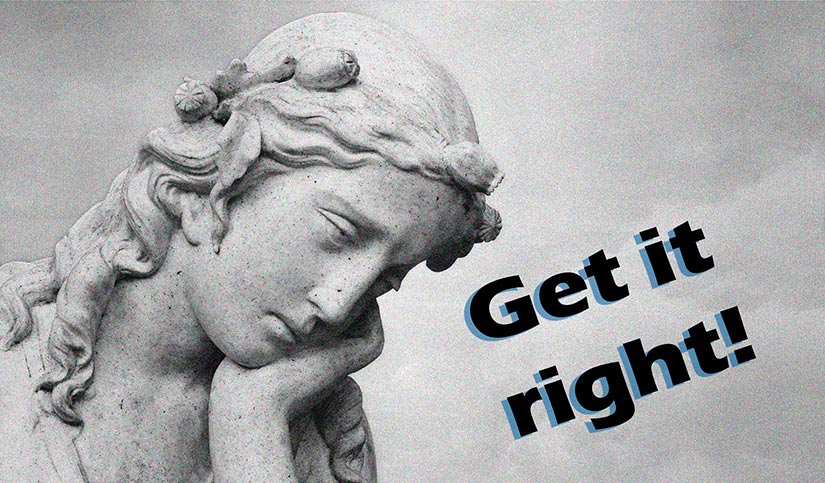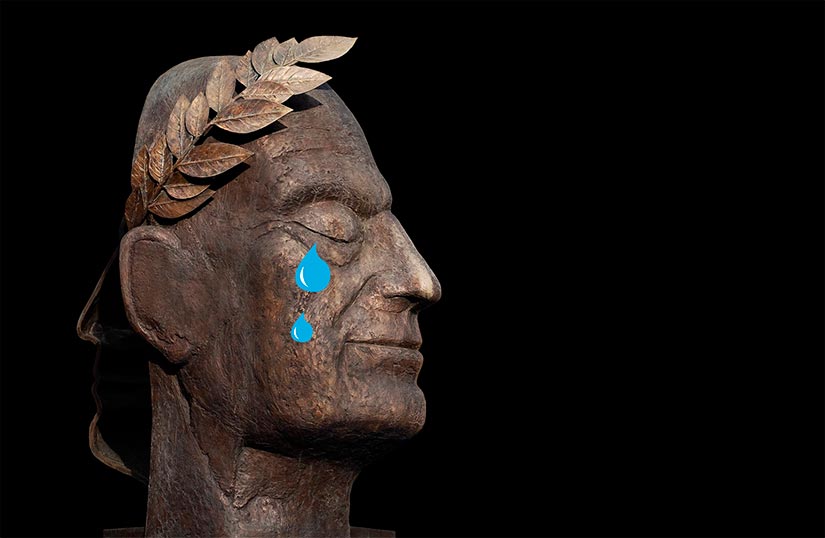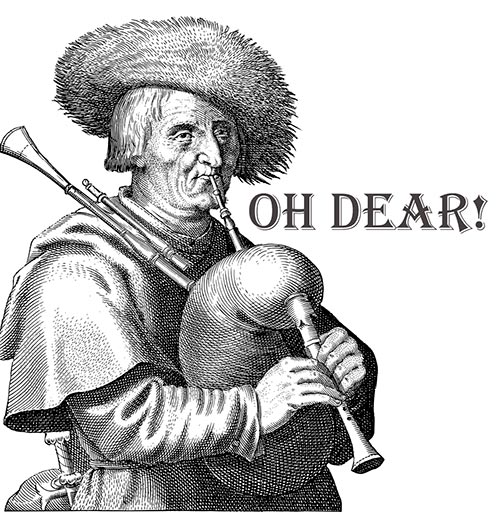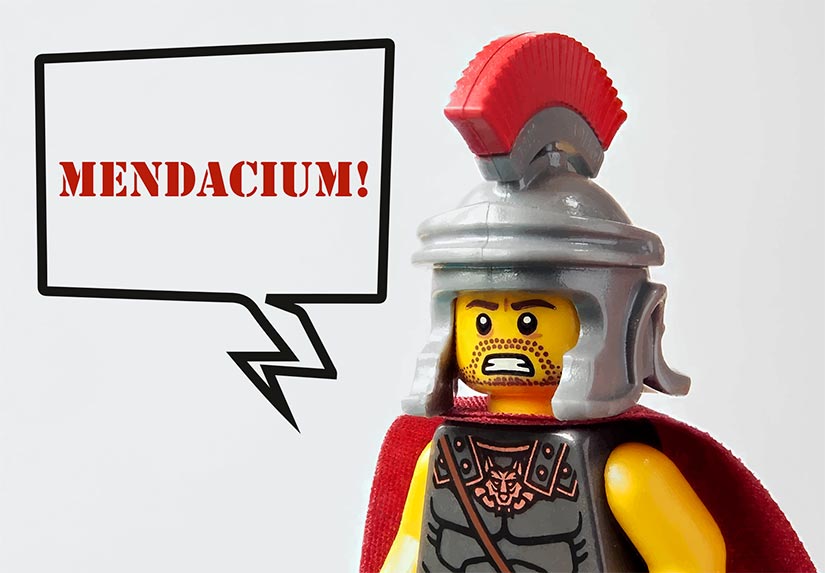Think
True or False? The worst mistakes in historical films
After his last article, "True or False? The worst mistakes in historical series".written together with Javier Martinez, returns our student Gabriel Garza, of the Degree in History + Diploma in Archaeology and co-author of project @morrior_invictus. This time, he brings us another review in which he unveils the worst mistakes in three popularly known historical films.

There are many films that boast a high historical quality and enjoy enormous success on locker. The present article does not have the goal to judge cinematic issues, be it the work of directors, producers or screenwriters. Therefore, the following lines are far from being a film review.
However, as a future historian, I feel obliged to highlight the historical atrocities committed in films from a strictly academic point of view. To do so, I will take three films as examples, pointing out the historical errors that make so many experts shudder at subject.
It should be noted that, like the series, many of the films have more than one historian advising them on the subject subject matter. Unfortunately, very rarely do both the historian and director work with the goal to produce a film based on reliable sources. For their part, the producers hide behind the fact that the events themselves are to blame, that they are too boring, or that the characters are too flat... hence the taste for over-seasoning the personalities of the protagonists.
However, fiction can never surpass history. Therefore, a good historical film that is true to the events will always be better than a hybrid film (neither historical nor fictional).

300: an error of addition
The first film I would like to highlight is 300, directed by Zack Snyder. This is an adaptation of Frank Miller's comic book about the famous Battle of Thermopylae, which took place in 480 BC. In the context of the Second Medical War, Xerxes, the king of Persia, confronted the different polis in his effort to conquer Greece. Faced with the arrival of the large Persian army, the Spartan king Leonidas launched himself with 300 Spartiates (to be distinguished from the Ilothians, mere slaves) into the Straits of Thermopylae to stop the Persians.
The first error is the eagerness to summarise the entire battle in terms of the 300 Spartans, an idea that is widespread in the popular imagination. The evidence of the sources suggests that at least 7,000 Greeks took part in the battle (some sources mention more, others fewer), including the 300 Spartiates, the 400 Thebans, the 400 Corinthians and the 700 Thespians (the latter are the great unknowns).
The second error lies in the sheer improvisation in the portrayal of the historical characters. For example, the film depicts Leonidas as a young and energetic man, when in fact this legendary king of Sparta must have been over 60 years old, i.e. a venerable old man with already limited war skills.
Ephialtes, another of the most important characters in the plot, is presented as a Spartan with a deformed body who, angered by Leonidas' refusal to take part in the battle, takes revenge by betraying them. Ephialtes, however, was a shepherd belonging to the Malieos tribe, who decided to betray the Greeks in exchange for a reward promised by the Persians.
Much of the costuming in the film is very poorly thought out. For example, Xerxes' extravagant and exotic attire is not at all consistent with the garb worn by the Persian elite in the 5th century BC. Also, the military costumes of the famous Persian military corps, known as the "Immortals", are clearly distorted. These details, among many others, reveal the distorted context of the film, which in no way qualifies as historical.
The last big mistake, which has surely brought tears to the eyes of more than one historian, occurs in a conversation between Greek troops. In the film's script, Leonidas is attributed with the phrase "Better, so we fight in the shadows", when, in fact, it was a Spartiate named Dienekes who said it. Whether out of ignorance or a premeditated act to sweeten the plot, this subject of script errors suggests a complete lack of historical rigour.

The gladiator who never existed
The next film I would like to mention is Gladiator. I imagine that all readers of this article will have seen it. It is a film directed by Ridley Scott, chronologically set during the reign of the emperor framework Aurelius and his son Commodus (2nd century AD). In this context, the story of a Hispanic general, Maximus Decimus Meridius, who is favoured by framework Aurelius, is set in this context. As a result, Commodus, who aspired to the throne, tries to assassinate Maximus.
This film has several major errors. In the beginning we see sample the battle of Vindobona, a conflict that never happened. It shows the use of siege weapons by the Romans against the Germanic tribes in the open field. This can only be described as naïve, as this subject war weaponry was only designed to be used against fortified cities.
Another big mistake is to suggest that the murderer of framework Aurelius was his own son. In the film, Commodus murders his father with a pillow while the dramatised scene is watched by statues of the ancient emperors. However, this is completely false, as he actually died of smallpox (although other sources claim that his death was caused by eating a bad apple).
The description of Commodus is that of a despotic and decadent emperor. Nowadays, some historians suggest that his vision was burdened by many myths about his unconscionable behaviour. In other words, the good emperors were not so good, nor were the bad ones so bad. All the political intrigues, and above all, the all-too-common defamation of Roman elites, must be taken into account.
Nor is it true that the last emperor of the Antonine dynasty died in a vulgar gladiatorial combat in front of the eyes and patience of the people of Rome. The sources of the time suggest that Commodus was betrayed and strangled by Narcissus (his trainer staff) as part of a palace conspiracy.
This brings up the topic of the spectacles in the age of the Empire. When one thinks of gladiatorial fights, a grotesque scene full of blood and death comes to mind. However, this would be a very mediocre and limited view of Roman public games. In general, the defeated was not killed, mostly out of common sense. Why would a lanistae (the lord who bought, maintained and trained the gladiators in the art of combat) spend a fortune on buying and training future gladiators, if at the first opportunity they were going to be killed? In reality gladiator fights were a sport, something more like a show than a death match.

Wallace: beyond fiction
The last film I would like to highlight is Braveheart, a film based on the story of the Scottish hero William Wallace, who took part in the first Scottish war of independence in the 13th century. At the beginning of the film, we see sample a Scotland that has been under English rule for many years, although this is not entirely true. In fact, the Scots themselves asked financial aid to ask Edward I of England (the "bad guy" in the film) to choose which of the candidates should be king of Scotland. The latter took the side of John of Balliol, who would later betray him to the French. As a result, Edward would later invade Scotland.
Furthermore, the protagonist is very poorly portrayed, as he is initially depicted as a poor boy, the son of peasants who barely has enough to eat. However, sources indicate that William Wallace was the son of a nobleman, so he suffered none of the hardships depicted in the film. His psychological portrayal is also adulterated, as he appears as a character of unimpeachable morals, a character who wants nothing more than to live as a humble peasant. However, sources suggest that Wallace was not as good as he is portrayed in the film. It is even suspected that he fought in Wales as a mercenary for the English.
The last big mistake I would like to point out is in the scene of the battle of Stirling Bridge, which is very poorly recreated. In this historic event, the bridge was core topic in the Scottish success, because of its strategic importance. After the English cavalry crossed the bridge, it was stopped by the long Scottish lances. After being stopped, the Scots pushed the cavalry back across the bridge, managing to make a funnel. In this way, they managed to hold the position with great ease. Due to the weight the structure was carrying, the bridge gave way, and many of the English troops fell into the river.
A brief reflection
Lately, history has become the object of a dangerous relativisation, as if events were something that depended on the interpretation of each individual (in this case, directors and scriptwriters). This could result in a future in which discipline loses all its scientific value or, even worse, becomes an entertainment machine.
Through this article I wanted to show that any film, no matter how blockbuster or attractive it is, can have serious historical errors. By this I do not mean to belittle the films, far from it. Both Gladiator and Braveheart are considered to be two of the best films in the history of cinema, and this is rightly so, as they are spectacular productions. However, there are films such as 300, which take away all subject historical rigour and are true atrocities for any connoisseur of the subject.
My goal has been to warn and demand a critical spirit from the spectator; that is, not to believe everything he or she sees without questioning whether the representation of the facts is true or false. As we have seen, films such as Gladiator or Braveheart are great milestones in the history of cinema, and yet they still have the occasional historical flaw. Watching a historical film should not be limited to watching it as an object of entertainment, but one should also check the information against the sources in order to enjoy its value as a material for historical dissemination.

If you liked the article, you might be interested in one of our Degrees!









